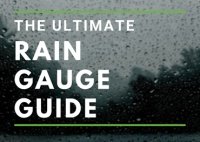Five Handy Hints to Help You Find The Right Building Moisture Meter

Moisture meters measure the percentage of water within a material and take comparative moisture readings.
If you are looking to determine moisture levels within an existing building or assess material suitability during construction, this article is for you! Our scientists have assembled five handy hints to help you find the most appropriate building moisture meter for your application.
About Building Moisture Meters
There are two main types of building moisture meter available. These are pin-type meters (also known as destructive) and non-destructive meters.
1. Pin-Type Moisture Meters
Pin moisture meters take measurements by inserting two pins into a surface. The process of generating a reading starts with measuring the electrical resistance of a material between the two pins. Water conducts electricity, so where moisture in any material is low, there will be a high amount of resistance. Where water content is high, resistance will reduce. Pin moisture meters convert resistance and express it as a percentage.
Some pin meters will have different settings for different materials - such as wood, concrete or plasterboard. Others are calibrated to a standard and will use correction charts to aid users when calculating moisture levels.
2. Non-Destructive Moisture Meters
Non-destructive moisture meters create relative and comparison readings when an electric field sensitive to moisture levels.
The best applications of non-destructive moisture meters are:
- Where markings left by a pin meter are not acceptable
- If it’s impossible to get readings from a pin meter (e.g., under hard surfaces like tiles)
- Dry concrete, timber floors, cabinetry, and painted walls.
5 Tips for Purchasing a Building Moisture Meter
1. Moisture Range
First, confirm the measuring range of the meter you wish to purchase. After eliminating all models that don’t meet your parameters, decide whether you want a device that measures moisture content percentage or takes comparative moisture content readings or utilises both methods, depending on the materials investigated.
2. Materials to be Measured
Wood, drywall, concrete, tiles - what items do you intend to measure with your building moisture sensor? Will you be sticking to a single sample type or measuring several? Not all moisture sensors are created equal so ensure the moisture meter you are considering is suitable for the materials you wish to measure.
3. Destructive vs Non-destructive Moisture Meter
Pin moisture meters leave marks in the materials measured and can’t reach all areas. Therefore, they are not suited to some applications.
4. Measuring Depth
Non-destructive moisture meters measure up to 30-40mm deep. This attribute works well for materials 2cm to 4cm thick but not for thinner boards.
Pin meters typically penetrate a surface, such as wood ≤1cm. For thicker wood, you can fresh cut the ends of the boards or timbers and then measure.
5. Price
The price of a building moisture meter will depend on the features offered and the device’s accuracy. For assistance finding the right balance between required features and price – contact us!
Building Moisture Meter Examples

Moisture Meter for Wood & Building Materials
|

Professional Pin-Type Moisture Meter
|

Moisture Encounter Plus Meter
|

T660 Material Moisture Measuring Device
|
|
|
Conclusion
Incorporating the five criteria listed above will help you find the correct building moisture meter for your application.
Have a question about the meters listed above? Need a hand finding the best moisture meter for your application? Speak with an Instrument Choice Scientist: Call 1300 737 871 or email [email protected].
Also interesting
At Instrument Choice, we proudly stock over 150 brands of scientific instruments and laboratory equipment. To help you find the best products to suit your application, the Instrument Choice Scientists regularly spotlight brands so you can better know them and the products they offer.
In this edition, we feature Davis Instruments, the leaders in personal and professional weather stations.
Read on to discover why Davis Instruments are so popular

A rain gauge is the best way to determine how much precipitation your home or property has received. With such a wide variety of rain gauges available, it can be overwhelming to select the best for your needs. For this reason, we have created this up-to-date guide to modern rain gauges.



